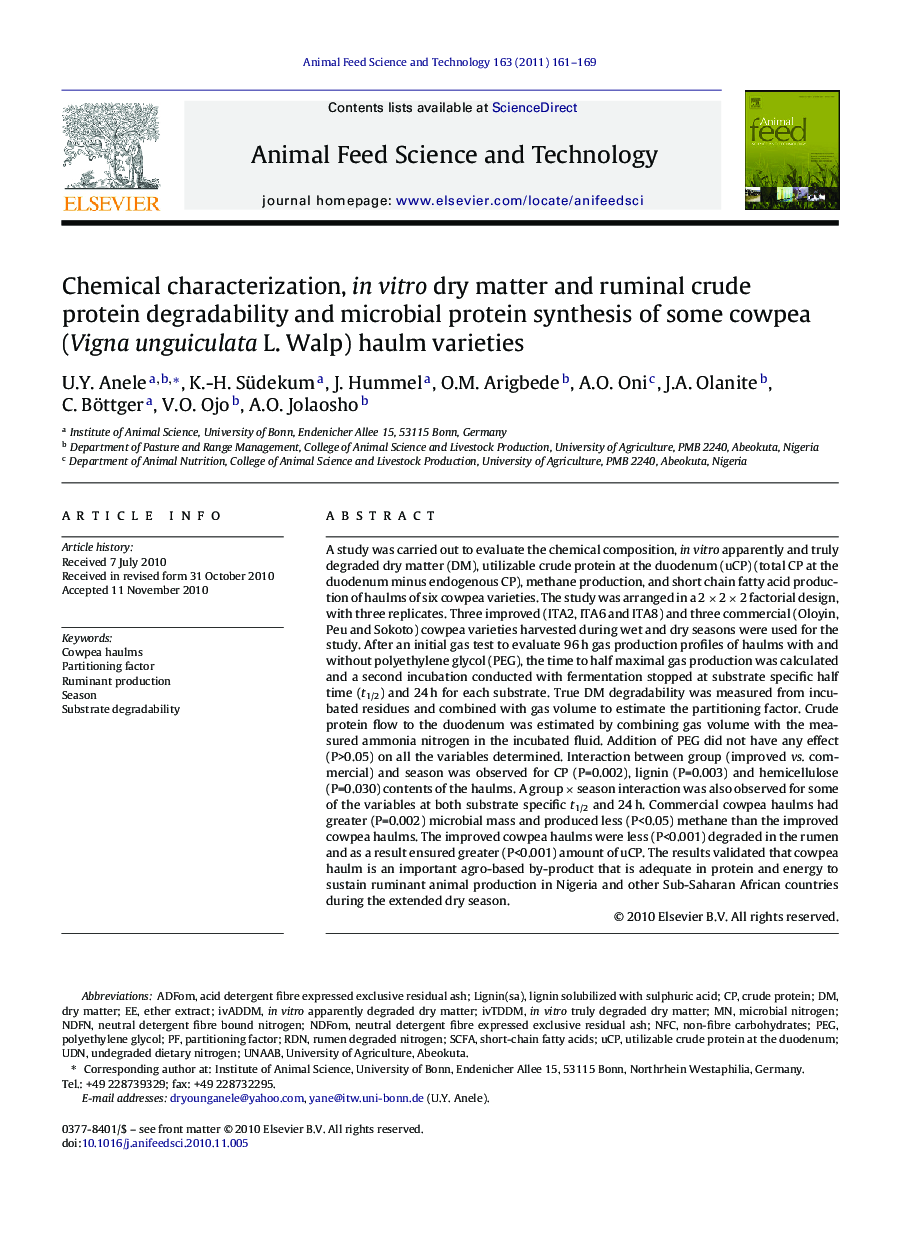| Article ID | Journal | Published Year | Pages | File Type |
|---|---|---|---|---|
| 8492839 | Animal Feed Science and Technology | 2011 | 9 Pages |
Abstract
A study was carried out to evaluate the chemical composition, in vitro apparently and truly degraded dry matter (DM), utilizable crude protein at the duodenum (uCP) (total CP at the duodenum minus endogenous CP), methane production, and short chain fatty acid production of haulms of six cowpea varieties. The study was arranged in a 2 Ã 2 Ã 2 factorial design, with three replicates. Three improved (ITA2, ITA6 and ITA8) and three commercial (Oloyin, Peu and Sokoto) cowpea varieties harvested during wet and dry seasons were used for the study. After an initial gas test to evaluate 96 h gas production profiles of haulms with and without polyethylene glycol (PEG), the time to half maximal gas production was calculated and a second incubation conducted with fermentation stopped at substrate specific half time (t1/2) and 24 h for each substrate. True DM degradability was measured from incubated residues and combined with gas volume to estimate the partitioning factor. Crude protein flow to the duodenum was estimated by combining gas volume with the measured ammonia nitrogen in the incubated fluid. Addition of PEG did not have any effect (P>0.05) on all the variables determined. Interaction between group (improved vs. commercial) and season was observed for CP (P=0.002), lignin (P=0.003) and hemicellulose (P=0.030) contents of the haulms. A group Ã season interaction was also observed for some of the variables at both substrate specific t1/2 and 24 h. Commercial cowpea haulms had greater (P=0.002) microbial mass and produced less (P<0.05) methane than the improved cowpea haulms. The improved cowpea haulms were less (P<0.001) degraded in the rumen and as a result ensured greater (P<0.001) amount of uCP. The results validated that cowpea haulm is an important agro-based by-product that is adequate in protein and energy to sustain ruminant animal production in Nigeria and other Sub-Saharan African countries during the extended dry season.
Keywords
Related Topics
Life Sciences
Agricultural and Biological Sciences
Animal Science and Zoology
Authors
U.Y. Anele, K.-H. Südekum, J. Hummel, O.M. Arigbede, A.O. Oni, J.A. Olanite, C. Böttger, V.O. Ojo, A.O. Jolaosho,
